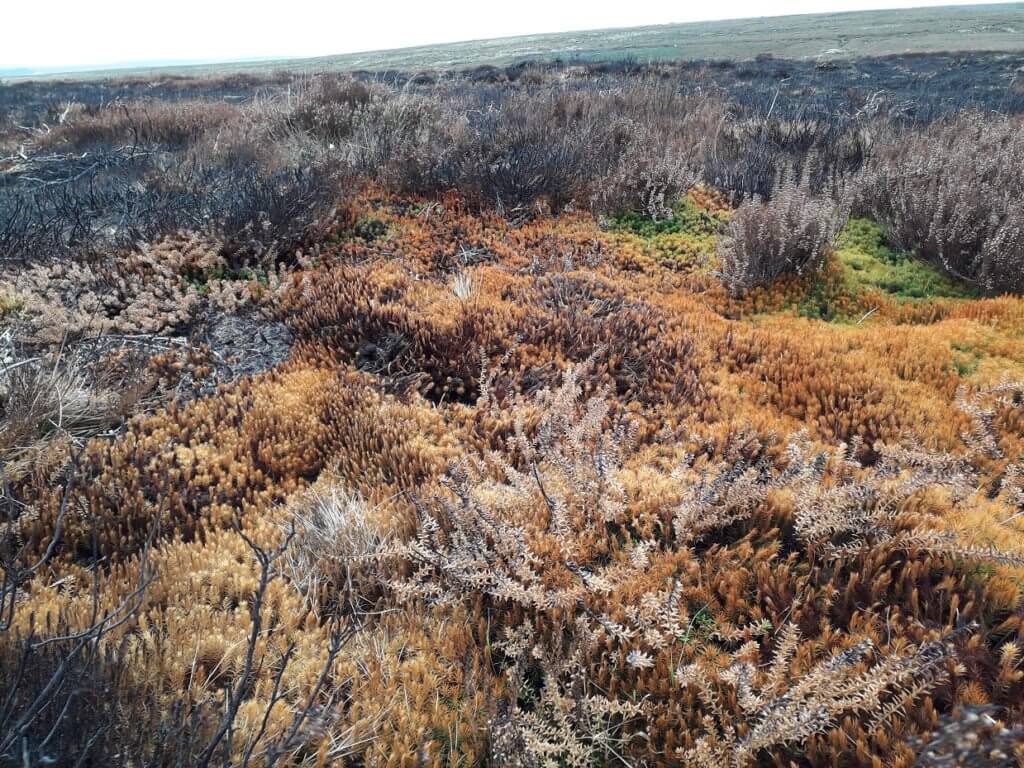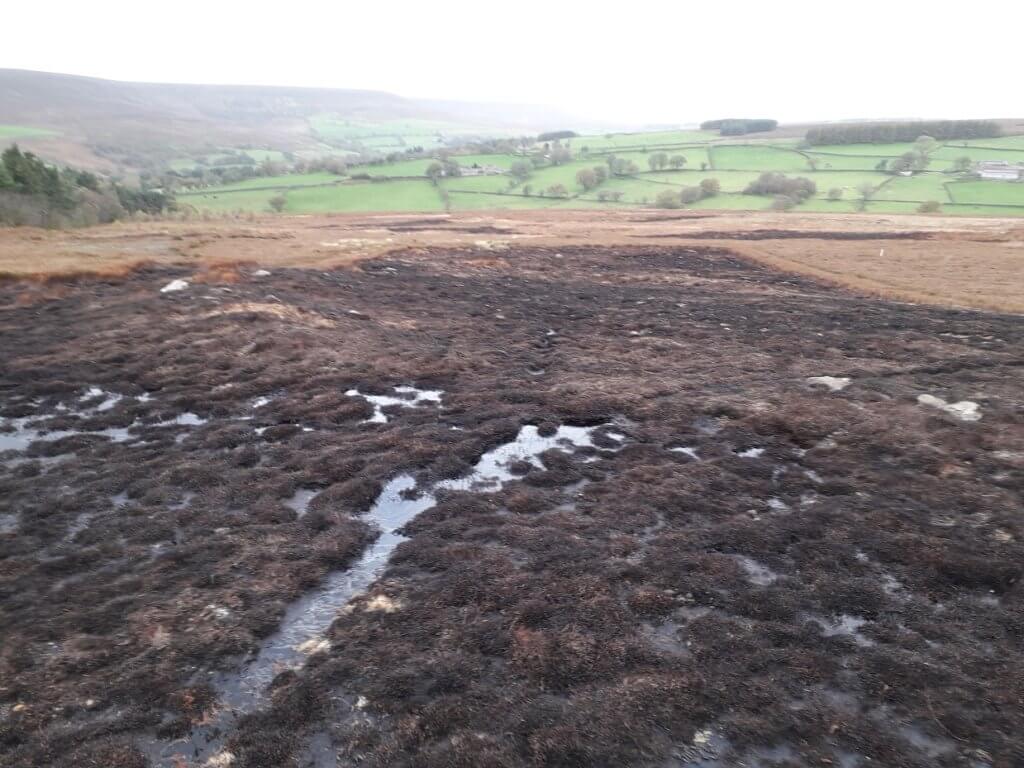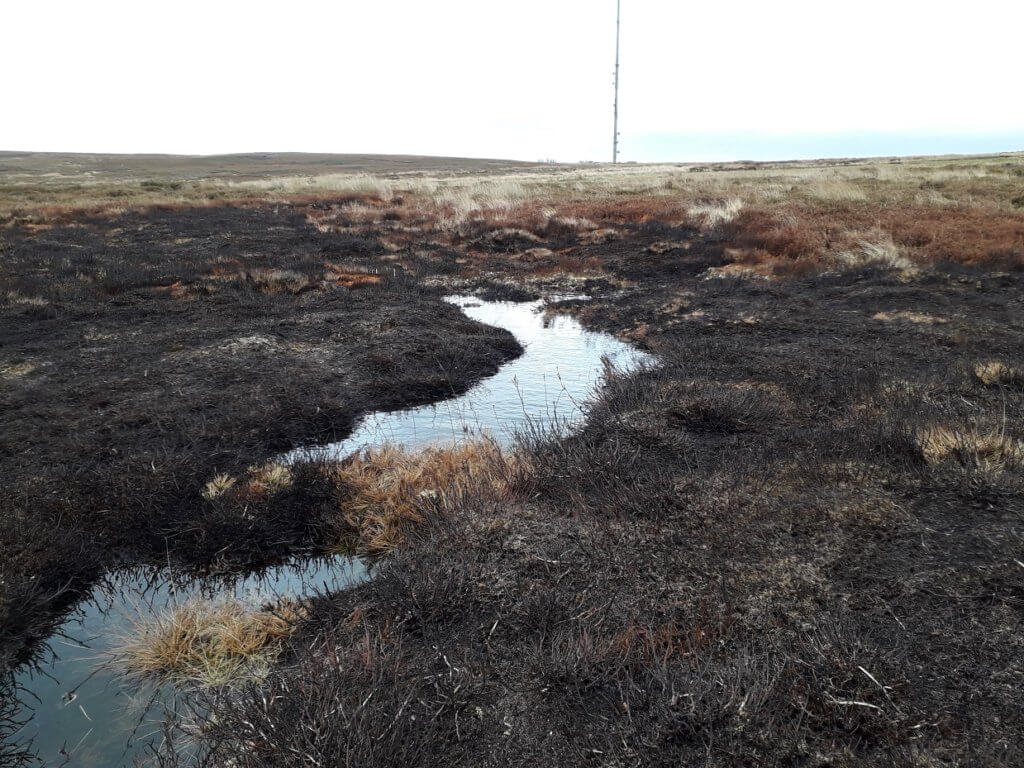There are indications that many intensive grouse-shooting estates are undertaking more heather (and in some cases Sphagnum) burning this year because they feel that the Walshaw Moor net is closing in on them.
Here are some examples of what heather burning actually looks like from the North York Moors. Does this burning follow the heather burning code, we wonder? No doubt Natural England will decide in their normal fearless manner protecting the natural world.


Does this look like the type of habitat management that is great for wildlife to you? Great for mosses?
If not, then please add your name to Gavin Gamble’s e-petition to ban driven grouse shooting.

[registration_form]
We were on Great Shunner Fell on Sunday, Yorkshire’s third highest mountain, which separates Upper Wensleydale from Upper Swaledale. It was a peerless day, a biting wind, a dusting of snow, but blue sky and sunshine. The views stretched from the Lakeland peaks to the North York Moors and Lanashire’s Pendle Hill. Smoke was already pouring from the moors above Swaledale, spoiling that view to the east. Upper Nidderdale was worse two weeks ago when 5 columns of smoke
heather burning on the moors above Wath and Ramsgill carried an acrid haze down into Pateley Bridge. This was pollution on an industrial scale, a pall hung over Upper Nidderdale on what was otherwise a beautiful day. The arrogance of those who think it is acceptable to pollute Pateley Bridge and its surroundings astonishes me.
Interesting, isn’t it, that stubble burning is no longer permitted because of the smoke it produced, yet large scale moorland burning is still allowed. But, let’s be honest, this type of burning is also used away from grouse moors and claimed to be a necessary conservation tool on lowland heaths and the south-west moors.
I have always said that we need to divide the problem and tackle all the issues individually. Using fire to destroy peatland and upland biodiversity is probably our easiest target. Lead shot is another low hanging fruit. When we try to go straight to a ban we leave them to much wiggle room for blurring the problem.
Simply chip away all of the individual activities they need- till their are none left.
Hopefully Mr Gove will be introducing Polluter Pays regulations along with Precautionary Principle shortly following his recent assurances so it will soon be a thing of the past?
Likewise a new (not morphed) fearless watchdog to ‘police’ and monitor environmental issues such as this.
Picture two in particular shows the futility of intensive management for grouse, the heather burnt was neither rank nor long. The mosses shown burnt in the other pictures look like what the farmers round here call star moss, Polytrichum commune ( Common Haircap). Occasional burning may be beneficial clearing old senescent heather to allow new growth but surely the heather burning code says a moor should have at least 5% of that. I know that NE wanted 10-20% mature heather but they allowed it to be watered down. Many moors these days have very little long heather and almost certainly none in places that would suit Hen Harriers and Short-eared Owls except as ” bait sites”where, well you can imagine the rest. Interestingly whilst one might think that intensive short heather moors might favour waders they seem to decline too under this sort of regime.
Waders did well at Langholm [Mark writes: irrelevant, off-topic]
My apologies. I attempted an informative response to your most interesting comment but, for reasons that I cannot fathom, since it comprised entirely good conservation news, it was censored.
Tim – ho ho ho! Stick to the subject.
If ordinary farmers did this they would soon be stopped, why is it that it is acceptable on moorland? Because of who owns it, the very people who should be upholding the law and making sure that what happens does not damage the environment are the very people who have a vested interest in continuing the bad practice.
Enough is enough we need a ban and it can’t come too soon.
Farmers were banned from burning straw in 1993 (with a £5,000 fine for breach) for various reasons, not least pollution so why is it that heather treated differently? Particularly as an intensive burn wipes out masses of biodiversity (eg craneflies = wader food) as well as adders etc. and damages peat (carbon sequestration, run off etc.).
A parliamentary petition to ban muirburn would be very helpful.
Perhaps thirty years ago, when I was middle-aged and quite naive, I had some difficulty accepting the conventional wisdom that burning heather moors was good for conservation. I assumed I must have been imagining the devastation caused by this practice on my local hills which were managed for grouse shooting. Why? Because everywhere I read about the subject in bird and nature magazines, I was “reliably” informed by eminent scientists that this was the case. However I really had my eyes opened when I became hooked on Hen Harrier monitoring in 1998. The more time I spent on the moors the more I realised the destructive nature of muirburn. A close colleague who is an expert field botanist carried out NVC plant surveys and was equally concerned. Neither of us doubted that a number of factors were involved, associated with hill sheep farming and forest planting, but that the most harmful management practices were muir grips and heather burning. Until fairly recently, burning affected some huge areas, culminating in a single fire destroying six square kilometres of prime heather moor in 2003. Plants (including mosses and lichens) and invertebrates, including an unique local colony of Large Heath butterflies, were wiped out, the butterflies remaining so to the present day. The fires were deliberately started during a drought, so huge amounts of peat were also burned, and fourteen years later heather growth has hardly recovered. Field Voles were also burned out of a large area, and Meadow Pipit densities were greatly reduced. All this happened on a Special Protection Area for Hen Harriers, yet no farmer was prosecuted and SNH did next to nothing to prevent several more illegal fires happening in subsequent years. How can anyone possibly claim that this was “good for conservation”? Ironically it was followed by a crash in the Red Grouse and local Curlew populations. No Hen Harriers have bred in the affected areas since 2003.